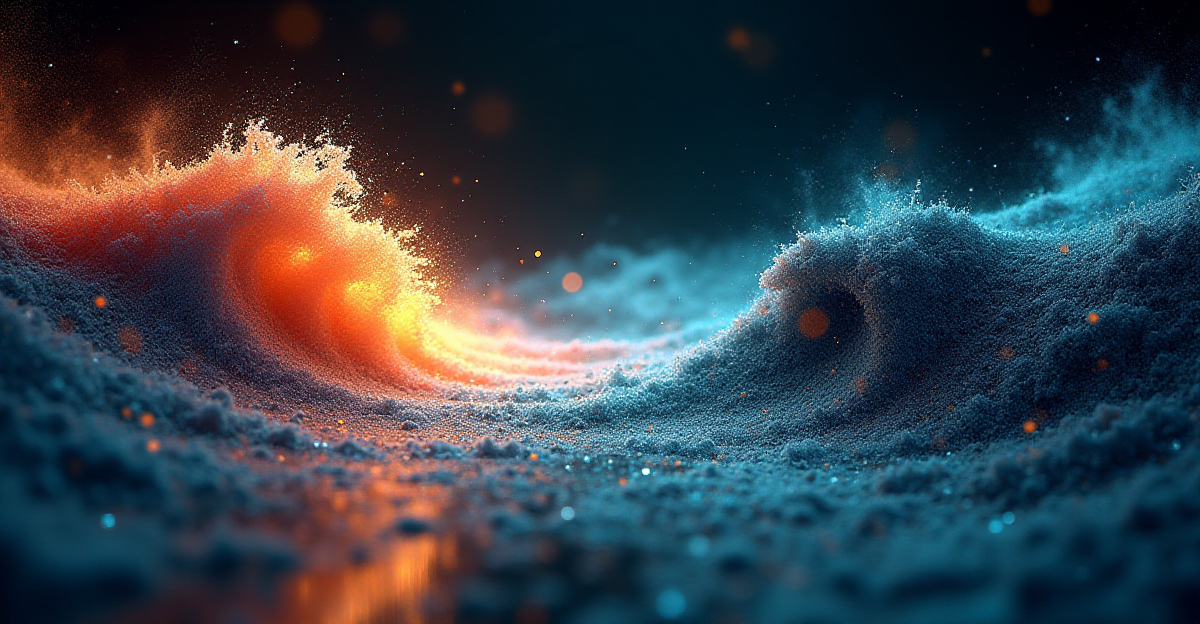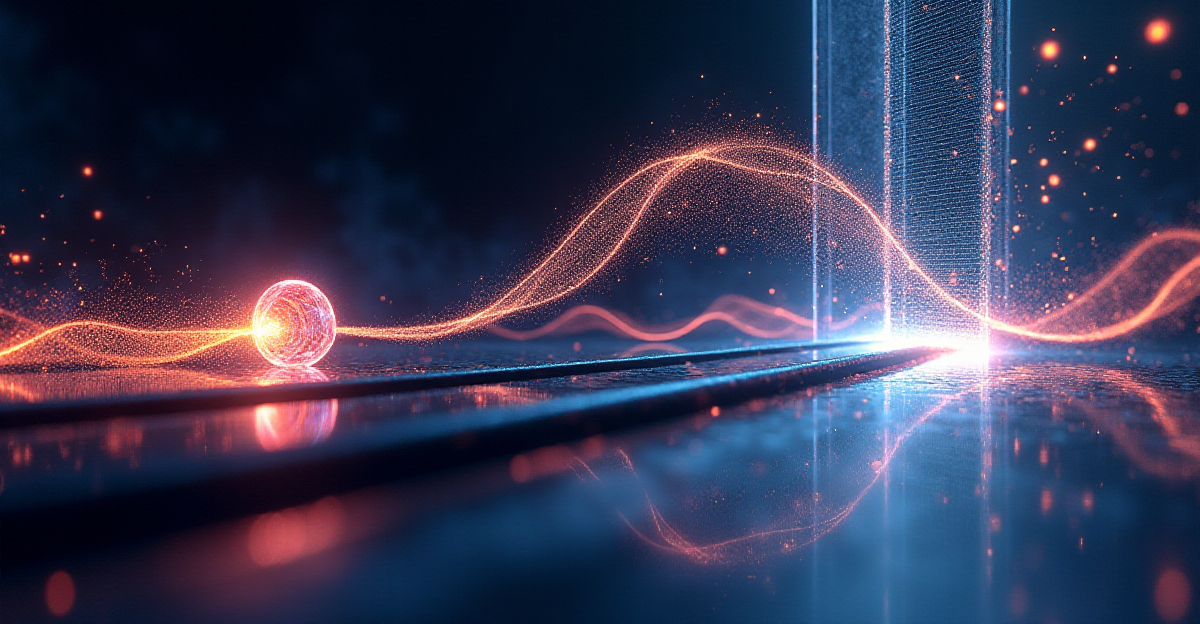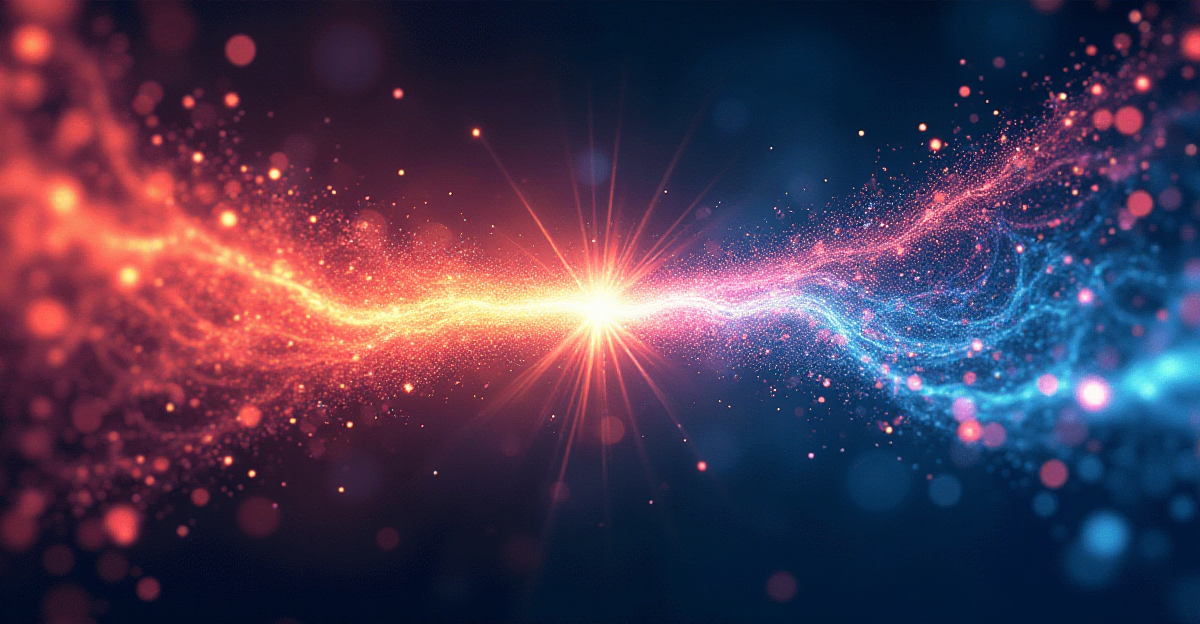At the core of quantum physics, wave-particle duality shows light and matter as displaying both wave-like and particle-like characteristics. This page walks you through historical tests like the double-slit experiment, which powerfully demonstrate this idea. This idea became concrete for me via personal investigations with light using prisms and diffraction gratings at home. We will explore how this duality questions our conventional understanding of physics by impacting everything from electron microscopy to quantum computing. This work attempts to make the strange character of reality approachable by linking daily observations with quantum theory.
Table of Contents
- Historical Insights into Duality
- Modern Experiments and Confirmations of Wave-Particle Duality
- Implications for Technology: How the “Strange Way Light and Matter Behave” Shapes Our World
- Extra’s:
Historical Insights into Duality

Ever wonder how light might be both a small particle—like a grain of sand—and a wave, like a ripple in a pond? A basic premise in quantum theory, this odd notion is known as wave-particle duality. Revealing the weird and sometimes contradictory character of the cosmos, quantum theory utterly transformed our knowledge of it.
Imagine passing two tiny apertures a beam of light through. On a screen behind the slits, what would one expect to find? If light behaved just as a wave, you would probably find an interference pattern, a sequence of alternating bright and dark bands produced by waves overlapping and either canceling each other out or reinforcing one another. But in the renowned double-slit experiment, this is not what scientists found. Fundamental presumptions about the cosmos were challenged and the contradictory character of light exposed by this experiment, a pillar of quantum mechanics.
The Double-Slit Experiment: A Journey into the Quantum World
One amazing illustration of wave-particle duality is the double-slit experiment. We do not find simply two brilliant spots on the screen when we shine a beam of light through the two slots. Rather, we observe a striped pattern of alternately bright and dark bars. This is the venerable indicator of wave behavior. The interesting thing is that the interference pattern vanishes when we try to follow the course of individual photons by arranging detectors behind the slits! The photons seem to know we are observing them and choose to act more like particles than waves.
Known as the observer effect, this strange discovery shows how our perspective of the cosmos is entwined with our observing behavior. According to quantum mechanics, the quantum world is a dynamic and participatory domain in which the very act of observation alters the reality we experience, not only a passive stage for events to unfold.
The Power of Electron Behavior
One of the best examples of how we might use electron behavior to view small objects outside the reach of visible light is electron microscopy. Like photons, electrons show wave-particle duality, which lets us produce quite finely detailed pictures of microscopic worlds. In medical imaging, electron behavior is evidence of the great influence wave-particle duality has on our knowledge of the cosmos and its possibilities for technical development. Fiber optic cables also exploit light properties to enable the very high speed data transfer. These uses show how quantum mechanics could shape our environment and challenge accepted wisdom on what is feasible.
Modern Experiments and Confirmations of Wave-Particle Duality

Consider a beam of light passing across two small apertures. On a screen behind them, what would you hope to find? Right, two brilliant stripes? That’s not what occurs, though! Rather, you find an interference pattern of alternating brilliant and dark bars. A trademark of wave-like behavior is this pattern. The core of wave-particle duality, a basic idea in quantum mechanics that has captivated scientists for decades, is this weird phenomena. Though basic, the classic double-slit experiment has captured brains and still provides understanding of the strange world of quantum mechanics.
The Double-Slit Experiment: A Mind-Bender
The simplicity of the double-slit experiment makes it really beautiful. Send a photon—a single particle of light—through the slits. You would expect each photon would show a single dot on the screen? Still impressively, though, we still find the interference pattern! This suggests that every photon, somehow, goes through both slits simultaneously! Foundation of quantum mechanics is this mind-bending idea, wave-particle duality.
Beyond the Double-Slit: Exploring the Wave-Particle Duality
Wave-particle duality has consequences much beyond the double-slit experiment. Researchers are investigating these phenomena in several additional particles, including electrons, neutrons, and even atoms nowadays. Possibilities for interesting uses abound when one can see and control electron behavior and other quantum properties.
For example, electron microscopy generates remarkably finely detailed photographs of microscopic structures by using the wave-like character of electrons. Among other disciplines, this technology has transformed materials science, medicine, and nanotechnology. Imagine a society in which we might see and control molecules and atoms! This is the promise of wave-particle duality realized.
Quantum Mechanics and Wave-Particle Duality: A Revolution in Science
The quantum theory underlying wave-particle duality extends outside the lab. It is absolutely fundamental for our knowledge of the cosmos. Stars are born and galaxies change fundamentally on the basis of the quantum mechanics ideas controlling the interaction of light and matter.
Though the quantum world is full of secrets and miracles, its beauty is that we may investigate and apply these ideas for the good of everybody. From transforming technology and medicine to advancing our knowledge of the cosmos, wave-particle duality remains pillar of modern science. This idea is about stretching human potential rather than only increasing our knowledge.
Implications for Technology: How the “Strange Way Light and Matter Behave” Shapes Our World

Ever wonder how light might behave as both a wave and a particle? Though this incredible fact—often defined as “wave-particle duality—is a basic basis of the cosmos, it is a mind-bending idea. It is a strong force influencing the daily technologies we use, not only a scientific curiosity.
Imagine attempting to grasp how light may act as a tiny particle, like a bullet moving in a straight line, and also as a wave spreading out like ripples in a pond. Though this apparently contradictory behavior is fundamental in the “quantum world,” the domain of atoms and subatomic particles, is practically impossible to fathom.
Seeing Things At The Atomic Level: The Power of Electron Microscopes
“Electron microscopy” is among the most wonderful illustrations of “wave-particle duality” in use. Ever wonder how doctors might view your cells from within? Using the “electron behavior” of electrons—which behave as both waves and particles—electron microscopes provide remarkably finely detailed images of microscopic structures. Imagine it: these microscopes let us view the complex mechanism within cells and material atom arrangement.
Fields including materials science and medicine have been transformed by electron microscopes. By seeing the structure of cells and tissues, doctors can utilize these strong instruments to more precisely and early in diagnosis disorders including cancer. By means of electron microscopes, scientists in materials science investigate atom arrangement in materials, therefore enabling the synthesis of stronger, lighter, and more heat-resistant compounds.
Beyond Electron Microscopy: Unlocking the Potential of the “Quantum World
The discipline of quantum mechanics” explains the odd and amazing atomic level particle behavior. And a fundamental idea in this amazing realm is “wave-particle duality”. It forms the basis for innumerable technologies that have changed our way of life.
Imagine a computer so strong it might invent life-saving medications or crack the toughest encryption algorithms. “Quantum computers,” which use the peculiar laws of “quantum mechanics” to do computations unachievable for conventional computers, offer promise.
Next there are “fiber optic cables,” the foundation of our contemporary communication infrastructure. To send data at very high rates, these cables depend on the “light properties regulated by quantum theory”. Fiber optics helps us to instantaneously connect with people all around the globe.
“Wave-particle duality” also drives lasers, which generate extremely focussed beams of energy by using the wave-like character of light. You might be shocked to find that “wave-particle duality” is occurring the next time you scan your items at the register!
Thus, keep in mind that the apparently very sophisticated technology you come across next time may be driven by the unusual and amazing ideas of “wave-particle duality.” This duality is not only a scientific curiosity; it’s also a major motivator of invention that propels us toward a day when the strange and beautiful laws of the “quantum world” define technology.
Extra’s:
If you’re fascinated by the enigmatic nature of the universe’s fundamental building blocks, you might be interested in exploring the properties of other elusive particles. Our article, “Neutrinos: The Ghost Particles of the Universe,” delves into the fascinating world of these nearly massless particles and their role in cosmic processes. Additionally, to gain a deeper understanding of the different states of matter, you might find our post on “Plasma: The Fourth State of Matter and Its Cosmic Significance” enlightening.
For further exploration of wave-particle duality and its implications, we recommend exploring external resources. The article “Wave-Particle Duality: Explanation, History, Compton Effect” provides a comprehensive overview of the concept, its historical development, and its applications. If you’re intrigued by the connection between quantum mechanics and human consciousness, you might find the article “Dreaming and Wave-Particle Duality: A Duality Between Reality and Fantasy with Practical Applications” particularly interesting.












1 thought on “Wave-Particle Duality: The Dual Nature of Light and Matter”